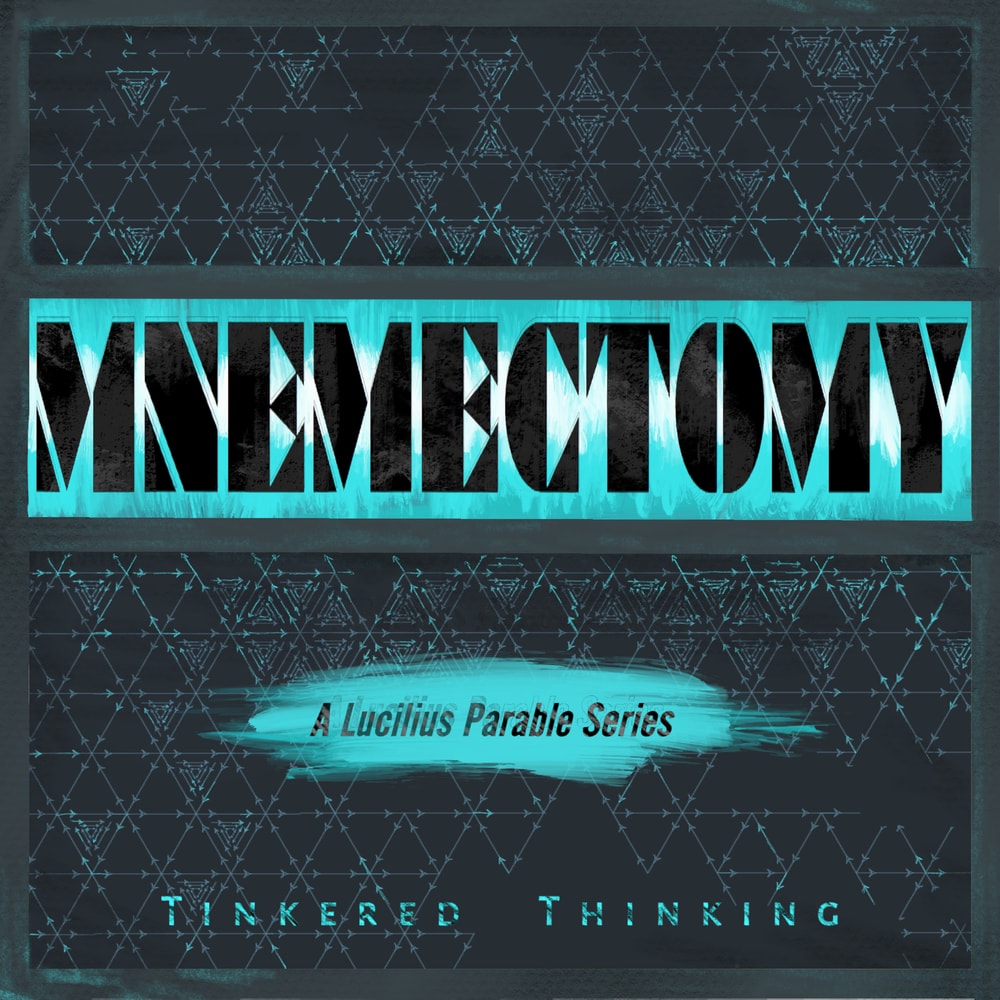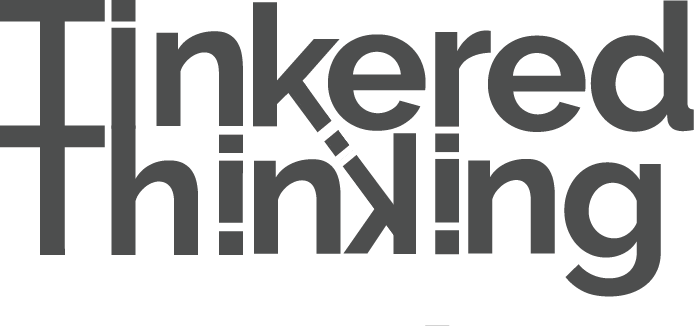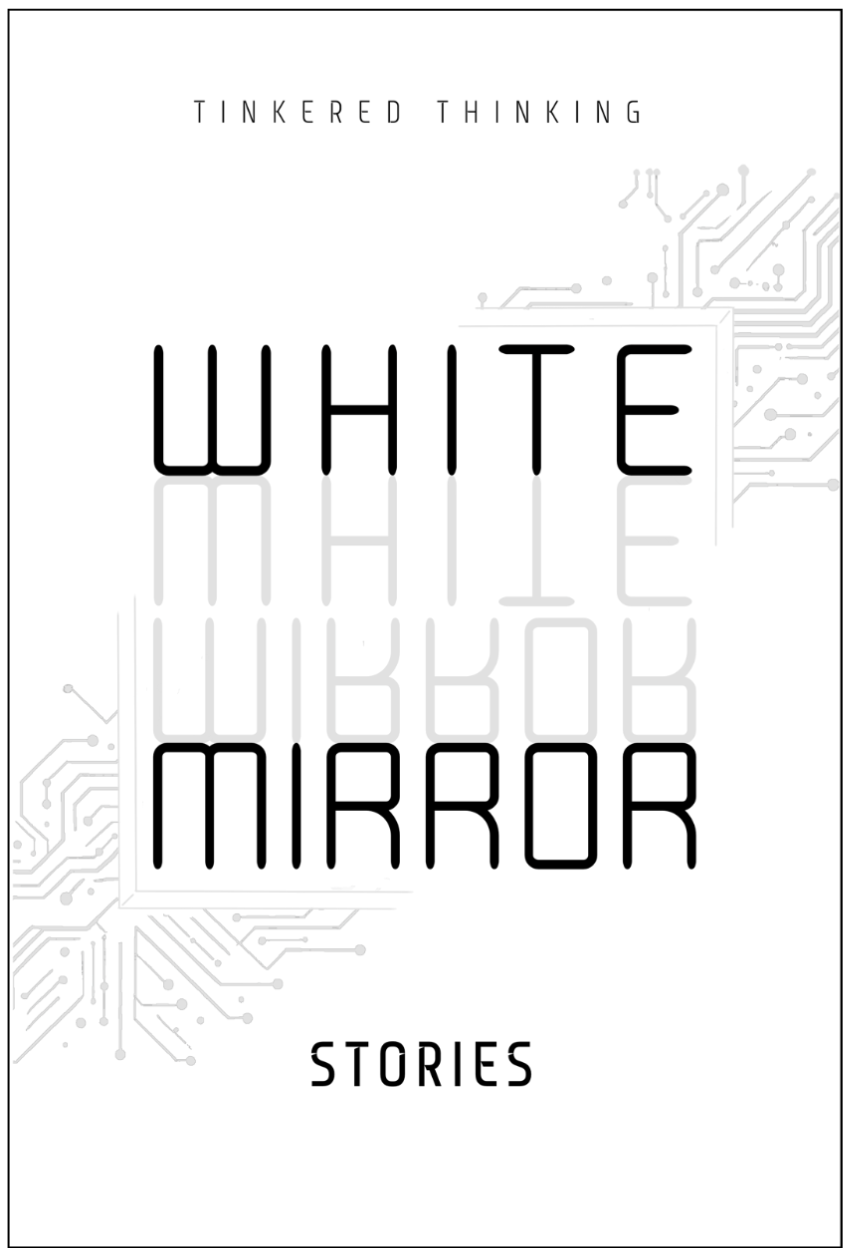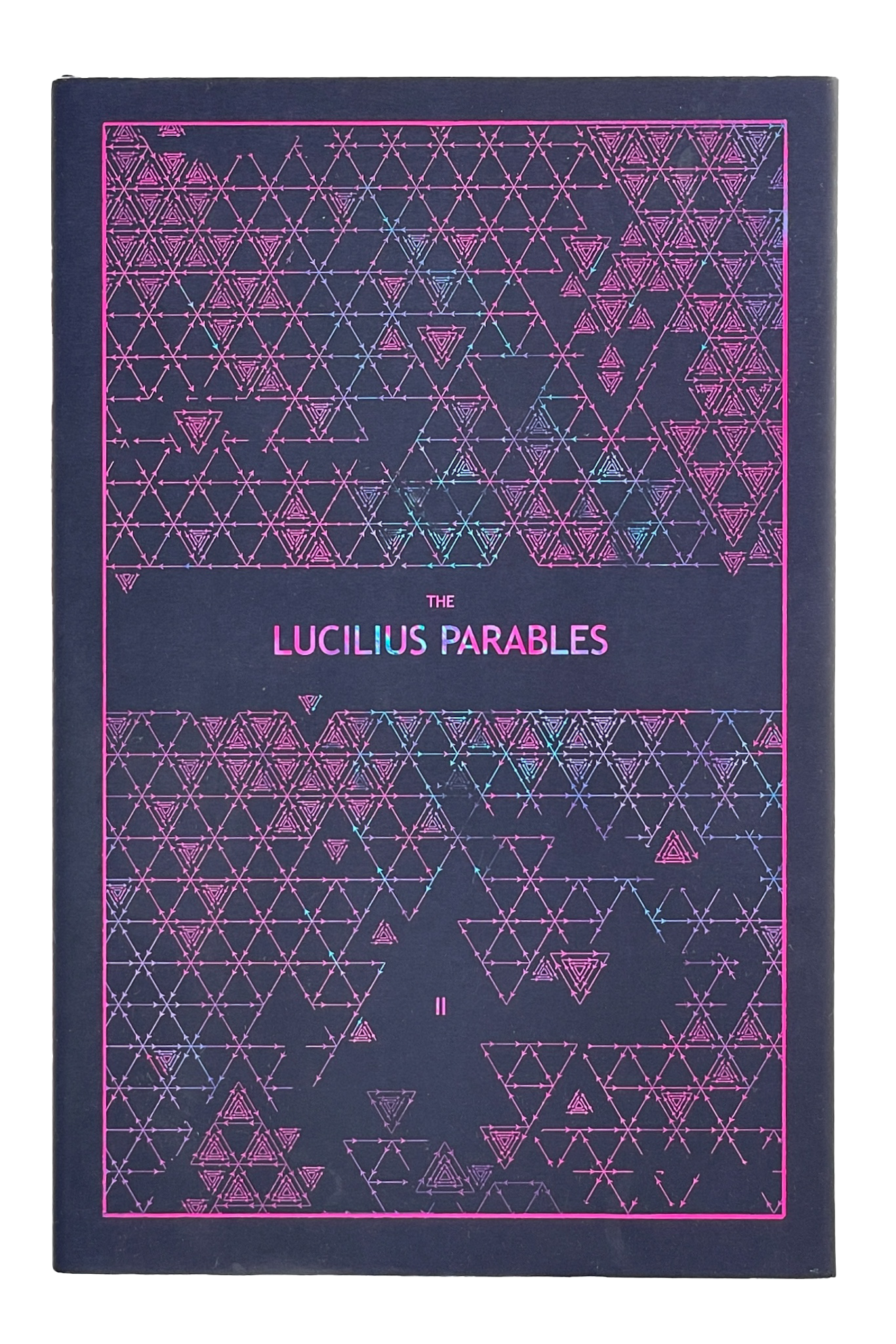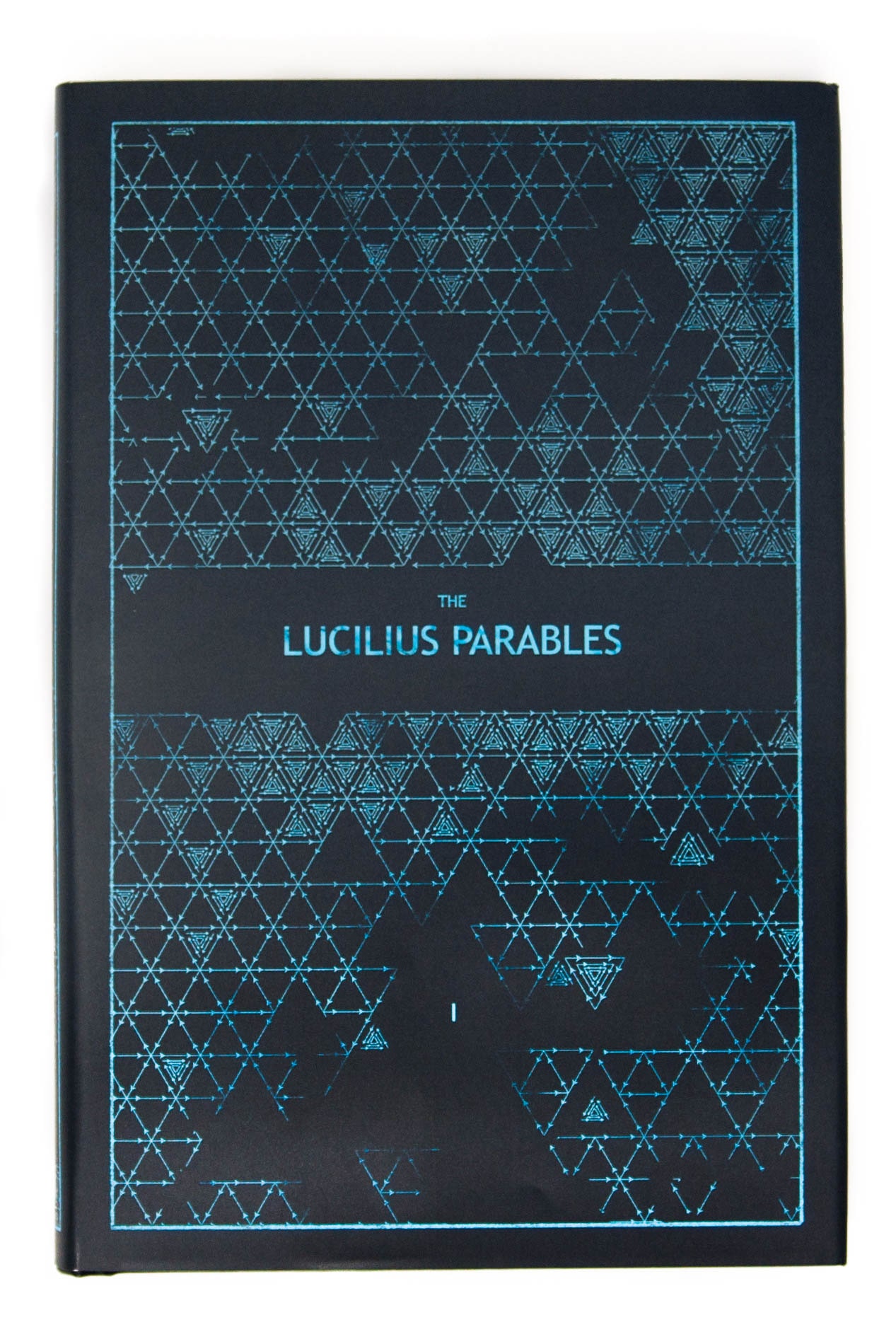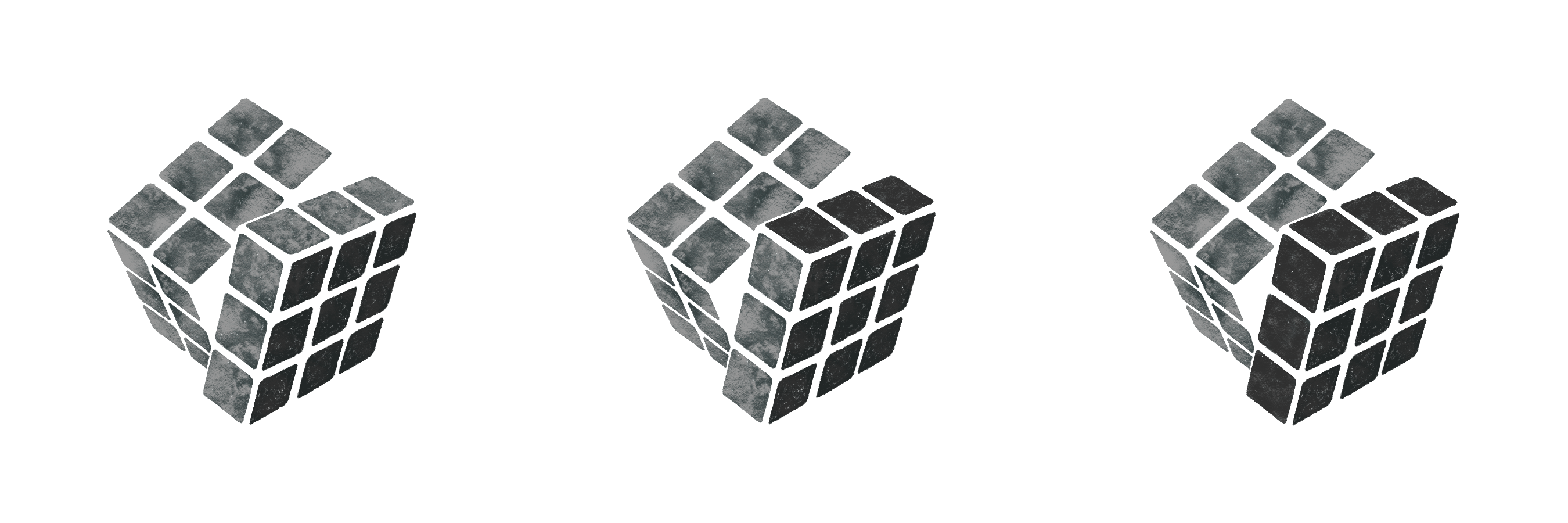Daily, snackable writings to spur changes in thinking.
Building a blueprint for a better brain by tinkering with the code.
subscribe
rss Feeds
SPIN CHESS
A Chess app from Tinkered Thinking featuring a variant of chess that bridges all skill levels!
REPAUSE
A meditation app is forthcoming. Stay Tuned.
A LUCILIUS PARABLE: DIGITAL PLUNGE
November 8th, 2020
Every new start began with a party, and that was the one thing everyone knew they’d gotten right so far. There was usually a few dreary moments before the celebration, filled with failure, as with this last iteration where everyone’s memory was still seared with the flash that ended it all. Lucilius breathed a sigh of relief. He was overjoyed to still be alive.
He got up out of bed and ruffled his hair, scratching his scalp, always marvelled by the accuracy of the sensation. He hobbled the few steps to his computer and pulled up the stats. This was the 121st iteration of the Global Existential Solution Experiment, or as it was commonly referred to as, The Gese. The last iteration had not lasted long, and the simulated world ended in global nuclear war, hence the flash seared in everyone’s waking memory. Lucilius had a feeling that the first day’s celebration would take a while to get started as it seemed that everyone always had a bit of the blues when an iteration of The Gese ended in such a morose way.
The people would celebrate because The Gese afforded humanity another chance to figure out a way forward. Early in the 21st Century, as the number of potential existential threats piled up on humanity’s shoulders - from trouble with the climate to nuclear war, viruses and Artificial Intelligence - Lucilius had presented an idea to the United Nations that was universally welcomed within just a couple of weeks.
Lucilius had been working on brain-interface technology for quite a while and had developed a pod in which a human could essentially hibernate while living in a video game. Biological life was essentially suspended while the mind stayed active. Lucilius proposed building 10 billion of these pods and loading everyone into a simulated version of the world as it stood at the time with the hope of serving 2 purposes: one is that humanity’s time away from the biosphere would give it time to heal, and second, the video game world which was a near perfect copy of the real world, would give humanity the opportunity to figure out the best way forward with less risk. With every iteration still lodged in everyone’s memory, the pure futility of nuclear war was now quite clear, particularly after the latest iteration. Lucilius was pretty sure there would be a global consensus to dismantle all nuclear weapons later that night during the celebrations. It had happened several times before during previous iterations that started when another ended in that iconic flash and heat.
Lucilius checked the stats and wondered how many times humanity would have to get swept up in the frenzy of fear that lead to nuclear war before it became permanently lodged in memory that it never ended well. Briefly, he wondered if it was causing harm to the human psyche - this reassurance to start over. Would that reassurance falsely remain when The Gese Experiment was over and humanity had to navigate reality for real?
He shook off the thought. By all measurements, things were going well. Lucilius, along with any one else in the simulation who was interested, had access to a view of the outside world. Before humanity had taken the digital plunge, they had united to create the most efficient system to support The Gese experiment. Hibernating humans needed far fewer calories than when fulfilling the functions of a fully operational planet, and so the automation of food systems was far less intensive for the requirements of The Gese experiment.
The biosphere was regenerating at an incredible rate and with a total collapse in the production of greenhouse gases, the climate problem was on track to be a self-correcting climate solution within two years. Other problems also benefited from the set up. Scientists were able to continue their work within the simulation, activating remote laboratories and equipment that existed outside of the simulation in the real world, and their data was honored across simulations without loss. Lucilius had taken a few such liberties. Social media was wiped of course, but any substantial writing that anyone had done was honored, and Lucilius himself had taken the time to write a few books, despite is main job being the maintenance of the systems foundational to The Gese.
He was still daily astonished that humanity had gone for it, and even despite the often terrible endings of iterations, Lucilius felt that overall, humanity was - perhaps for the first time - having fun.
He picked up his fresh brewed cup of coffee and took a sip, gratefully. And as he put it down and the mug clacked back, Lucilius heard the first distant pop of fireworks to celebrate the new day. Lucilius smiled. He picked his coffee back up and walked to the window. There was another pop, but he could barely see it.
He considered for a moment. It was technically against the rules, but, he didn’t think it was too much of a risk. He tapped his phone until it brought up global simulation settings. He placed a finger on a slider that was currently set to maximum and paused to perhaps think better of it. But in that moment he hear another pop of a firework getting launched into the sky. He pulled the slider all the way down and instantly the bright sun rolled out of view and the entire midday sky became a nightscape of stars. . just in time for the brilliant explosion of color to fill the sky’s canvas.
EDGE OF THE RABBITHOLE
November 7th, 2020
It’s one thing to have an idea, it’s quite another animal to make that idea come to life. Bringing any idea to life boils down to a series of problems that need to be solved - it requires poking around and searching for solutions. The reason why so few people hunt down the solutions required to bring ideas to life is perhaps because so many attempts to find solutions lead down long and winding rabbit holes that end with no solution. The experience of needing to start over with nothing to show for one’s effort can be incredibly demoralizing. There is a meta skill that anyone competent in their field eventually develops for problems in that field: it’s the ability to get a sense for whether or not a rabbit hole is promising or not.
As a beginner in a new field, it is usually next to impossible to come equipped with this intuition of judging a rabbit hole of research and effort just from it’s vague appearance from the outset.
Is this the path to the correct solution? Or is that other path better? Which will work faster?
The quickest way to get a good answer is to simply ask someone with who is a lot more familiar with the topic. An expert with seniority in a field is often just someone who can take a look at a problem and say “I’ve seen something like this before.”
But without an expert on hand, there are two crucial aspects to judging the promise of a rabbit hole.
One is testing as soon as possible, as often as possible and as fast as possible. If the first step down a rabbit whole of investigation can be tested in some way, then it should be tested before going any further.
For example in classical painting, there is a technique for establishing correct proportions of the object being drawn by comparing ratios of different lengths mapped on the object and comparing those ratios to the drawing. It’s a simple form of measurement that allows an artist to gain a greater and better approximation of the shape and size of the object, and this starts before any paint has touched the canvas, while it’s still just a drawing. It would be silly to wait until the entire canvas was painted in order to start measuring to see how the underlying drawing could be improved.
Something similar happens in coding. Instead of writing hundreds of lines of code in an attempt to bring an entire idea to fruition all at once, often just a small portion of code is written and then run to see if it works as expected. The error here is less grave than with the painting because any part of the code can be written. Unless of course all that code was written to serve a purpose that it doesn’t end up serving even when it does work as expected. But writing small pieces and testing as progress is made is likely to reveal that fact sooner, before all the time required to write what’s in mind has come about.
This leads to the second crucial aspect of judging rabbit holes: pivoting against the sunk-cost fallacy.
We all experience the fallacy of sunk-cost, often on a daily basis. Getting in one grocery line because it’s shorter can end up seeking like a bad idea when it moves incredibly slowly compared to the next line over. Do we make the switch? Often not because of the time already sunk in the commitment to the current line. The same thing applies to our efforts. Spending an inordinate amount of time chasing a phantom solution down a rabbit hole seems to justify more chasing, otherwise, what was the point of all the effort so far? Developing the skill to let that go and back away and start from scratch and try a different approach is invaluable for two reasons. Not only is it likely that a solution will be found elsewhere, faster, but trying out a different solution often quickly turns out to be an illuminating counter-point to the first attempt. Being able to compare the progress of two paths gives a greater sense of which might actually be more promising.
In this vein it can even be useful to purposely try a variety of paths, but dabble in each very quickly so that an array of possible approaches can be compared and rated.
Combining this ability to pivot with the necessity to test fast and frequently creates a simple rubric: if the current step of the rabbit hole can’t be tested, consider pivoting to an entirely different approach. Often what will happen is that some progress on a new path will reveal something about the prior rabbit hole that had seemed to grow cold, but now yields progress when the pivot is made back with a new perspective, new fact or realization that came about only by looking for answers elsewhere.
It all comes down to pivoting and testing.
EDUCATION'S PARADOX
November 6th, 2020
It seems education is always in need of improvement. Where education is regarded as important, it is never good enough. Just imagine if a school or if a nation came to the quaint decision that their education system was as good as it possibly could be, that no improvement was necessary and even possible. The image is as funny as it is paradoxical, and it hints at the conundrum that always besets any educational system, which can best be summed up by a question:
How do you teach someone to be better than you are in your area of expertise?
The next generation of teachers are invariably being taught by the current generation of teachers. And, if it’s possible for education to improve than theoretically there must be some kind of subtle bootstrapping that turns today’s students into teachers that are more capable than the one’s doing the training.
Before slicing into that difficult trick, notice that the teacher is beset with two difficulties. Not only must a teacher be well learned in their subject, but there’s a meta-subject that a teacher requires a sufficient amount of expertise: teaching.
Many of the best minds who have broken ground with new forms and areas of knowledge were not terribly good at translating that discovery to other people. There is a kind of intermediate variety of educator who functions like a translator: understanding the obscure discovery and translating it into a form that is more readily understood by other people. The brilliant mind who makes the discovery is a one-trick pony. The intermediate translator is a two-trick pony: understanding in the first place, and then translating.
The improvement of education is a sly two-step movement: on the one hand there is always room for improvement with the translation - and this is probably the area that has always been at a chronic deficit. Everyone learns a bit differently based on their prior experience, their vocabulary, their exposure to the subject and when the communication abilities of the teacher are mixed in, the results can be all over the place.
What’s perhaps the biggest missed opportunity in education is that teachers have almost no incentive to get better as communicators and translators of complex topics. It’s without a doubt that many teachers would like to get better at their job, but this does not mean they are well incentivized. We would all like climate change to be mitigated, but that does not mean we are well incentivized to make it happen. We do, however, have more incentive to buy a really sexy electric car - primarily because it’s sexy. Climate change mitigation is a secondary bonus because sexy cars are desired regardless of if it effects the climate for better or worse.
Imagine for instance if teachers didn’t get paid unless their students made money because of what they learned in class? That creates an undeniable incentive for the teacher, and there are even institutions like Lambda School that have instituted this type of structure.
The other bit about education’s two-step climb is the discovery of new and useful pieces of knowledge. Currently, we really don’t have a system for coming up with new ideas. Certainly we have the scientific method which tests ideas, but we don’t really have a rubric for how to induce novel revelations about the universe. It’s sort of random, but that doesn’t mean random can’t be herded into productive directions. If for example, the first step of education went through substantial improvements than we’d simply have a greater number of capable thinking students, which raises the number of possible chances for new realizations based on the apex of current understanding. If for example a great idea is only 1 in a million, but a population only has half a million well educated people, then it’s going to take 2 generations to have a great new idea. If however, a population raises it’s educational efforts by an order of magnitude and produces 5 million well educated people then they are likely to get 5 great ideas in a single generation. Any network effect between these ideas further magnifies the effect of the original effort to improve the education of more people.
To refocus on this translation and transport of knowledge from teacher to student must also admit a further cramped aspect of the set up. Some people, perhaps even most people learn best by doing, and the current way that school is imagined is often not in line with this at all.
It’s tempting to imagine a not so distant future when our teachers are individual AI’s that are calibrated precisely to who we are and what we know, intuiting exactly what to reveal and when for greatest retention and further creating novel, tailored exercises that naturally hyper charge a student’s ability to learn.
It’s a nice thought, but still far from a reality.
In the meantime, the next best thing is to attempt to become that AI teacher for one’s self. This requires a good deal of self-awareness that is used to study one’s own self and to observe what sort of challenge works best, and how to choose and implement that form of challenge from a subject that may be a complete mystery. This is a self-contained instance of the earlier bootstrapping problem. How do you pick the correct sort of challenge from a subject you know nothing about? The trick here isn’t to pick perfectly but to have the mindfulness to pivot to a smaller or larger chunk of the subject depending on how difficult or easy that random stab at the topic turns out to be.
IMPOSITION OF THE IMAGINED WORLD
November 5th, 2020
All sorts of things hang over our head. Something embarrassing that happened yesterday. The impending meeting in a couple hours. The dream project that hasn’t started but just continues to balloon and swell like a quaint depressing rain cloud grown into an angry and towering thunderhead. The imagined world is so palpable that often times it becomes an opaque blinder to the real one.
Watch where you’re going!
Someone yells as we snap out of a daydream, seeing the red light.
When the imagined world and the real world seem to be in sync is when we feel best. Often this is when things are going according to plan, but not necessarily. When things go according to plan is just the most recognizable form. For example, the past can’t unroll in the same way the future does in accordance to our expectations. So how does something like the remembered past fit into this instance when the real world and the imagined world seem to be in sync?
There are two aspects to this. One is the reality we have given the past that has occurred. The second is the way we imagine that past. What happened yesterday and the day before is certainly the crucial antecedent to now, but many aspects of the past were invisible as they occurred and more importantly the past exists only as we remember it. Memory is flawed as it is formed and flawed further as memory is accessed. This downfall is also the tool to aligning imagined and real worlds. But it requires separation. One person can curse their past for the present they have while another can understand that past in order to make sure that present doesn’t persist or get worse. The difference is the relationship each has to the past - to the imagined world.
The same applies going forward. One person who has their heart set on a future outcome is crushed when things turn out differently, whereas another person who gingerly holds possible futures at the same distance as the past isn’t crushed when events develop unexpectedly.
Regret and disappointment are a function of our relationship to imagined worlds more than they are a fact of reality.
By recognizing that a relationship can be squeezed between a person and the imagined worlds of the past and the future, and even the present further allows for that relationship to change. Reality is constantly giving a stream of honest feedback about how good or unhealthy that relationship is, and the rule of thumb here is that dissonance is painful. If the future is something to dread, does that say more about reality and the future that will take place, or does it say more about the person, and the relationship they have with an imagined future?
Incredibly, the same applies to the past, even though the past seems to be this solid, immutable entity. What has actually happened to result in the current situation certainly can’t change, but our relationship to it can. Again: does it say more about someone’s past or the way that past is seen if it’s regarded as terrible?
Both the futures we think might happen and the past we think happened are reflections of the way we react to the world. The way these imagined worlds impose upon us either enables or disables our ability to react effectively in the present. And with a little sense of separation - an ability to recognize a relationship to these imagined worlds - and a willingness to try and augment those relationships, the present can slowly, even suddenly begin to look full of opportunity and hidden leverage.
COEFFICIENTS OF ADDICTION
November 4th, 2020
Success can be boiled down to addiction management. But addiction is bad, something to be totally minimized, cut out. Right? Certainly when the addiction is used in the traditional form - when it refers to something that’s overtly harmful. Then again, it seems different things create different levels of addiction. The obvious hard drugs are certainly past a particular threshold that makes the addiction very obvious, and it’s these things past that threshold that we typically take seriously as addictions. But even beyond this threshold, different things still seem to inspire different levels of addiction. It seems that different things have different coefficients of addiction. The idea of a ‘coefficient’ here is injected to pin down this idea of variability among addictions. For many, if not most people, the coefficient of addiction for something like smoking might be very high, whereas for someone else, the coefficient of addiction for the same thing might be quite low. Sugar is another substance where the coefficient is quite high for most people. Now what happens if this coefficient is considered down below the detectable threshold, for something like work?
Most people can’t wait to finish, to relax, to indulge in the more pleasant addictions of food and entertainment, and perhaps a smoke and a drink. The addictive quality - the coefficient of addiction is subjectively present in these things. We can quite literally feel the pleasure.
But then again, some people manage to get addicted to things that don’t seem so obvious - like work. There are some people who are quite clearly addicted to their work, and it’s clearly not due to some sort of obvious chemical reaction as happens when we ingest something. There is, however, a chemical reaction happening - a complex set of neural interactions that all have their own specific weights that influence future probabilities that such a set of neural interactions will take place again. Those weights, based on things like receptor density and transmitter output can slowly change with use.
An exercise routine just started feels painful but becomes a pleasure with enough repetition, as the relevant neural pathways change and adapt.
To return to that opening statement: success can be boiled down to addiction management, applies, not just to the big obvious addictions that are best avoided, but also to the ones that don’t feel like addictions and which aren’t yet addictions. Bluntly, it’s a matter of avoiding those activities that have normally high coefficients of addiction, and trying to boost the number of those activities that have normally low coefficients of addiction - those things that require discipline and will power. With enough use, activation, and routine, these low coefficients of addiction can slowly rise, until things that normally take discipline and willpower become easy because they become pleasurable - even addictive.
-compressed.jpg)
